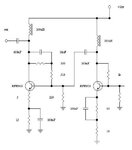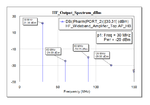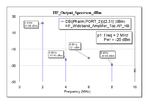neazoi
Advanced Member level 6
Hi I have made a small HF qrp transmitter (oscillator followed by two bfr96s buffers).
I have not a schematic to show yet but I have found that these class-A (I think) buffers give lowest harmonics (sinewave distortion) at a certain bias point, but they really get hot at that point. Especially the final one get's so hot that it cannot be touched for more than 4-5 seconds with the finger.
The buffers operate at 12v at 170mA in total.
While they get very hot, I do not see problems in the output waveform in neither 50R loadand no problems on open or short-circuit output.
Is that normal for the bfr96s when running in class-A (the same current is drawn efen with no input signal)?
I have not a schematic to show yet but I have found that these class-A (I think) buffers give lowest harmonics (sinewave distortion) at a certain bias point, but they really get hot at that point. Especially the final one get's so hot that it cannot be touched for more than 4-5 seconds with the finger.
The buffers operate at 12v at 170mA in total.
While they get very hot, I do not see problems in the output waveform in neither 50R loadand no problems on open or short-circuit output.
Is that normal for the bfr96s when running in class-A (the same current is drawn efen with no input signal)?





